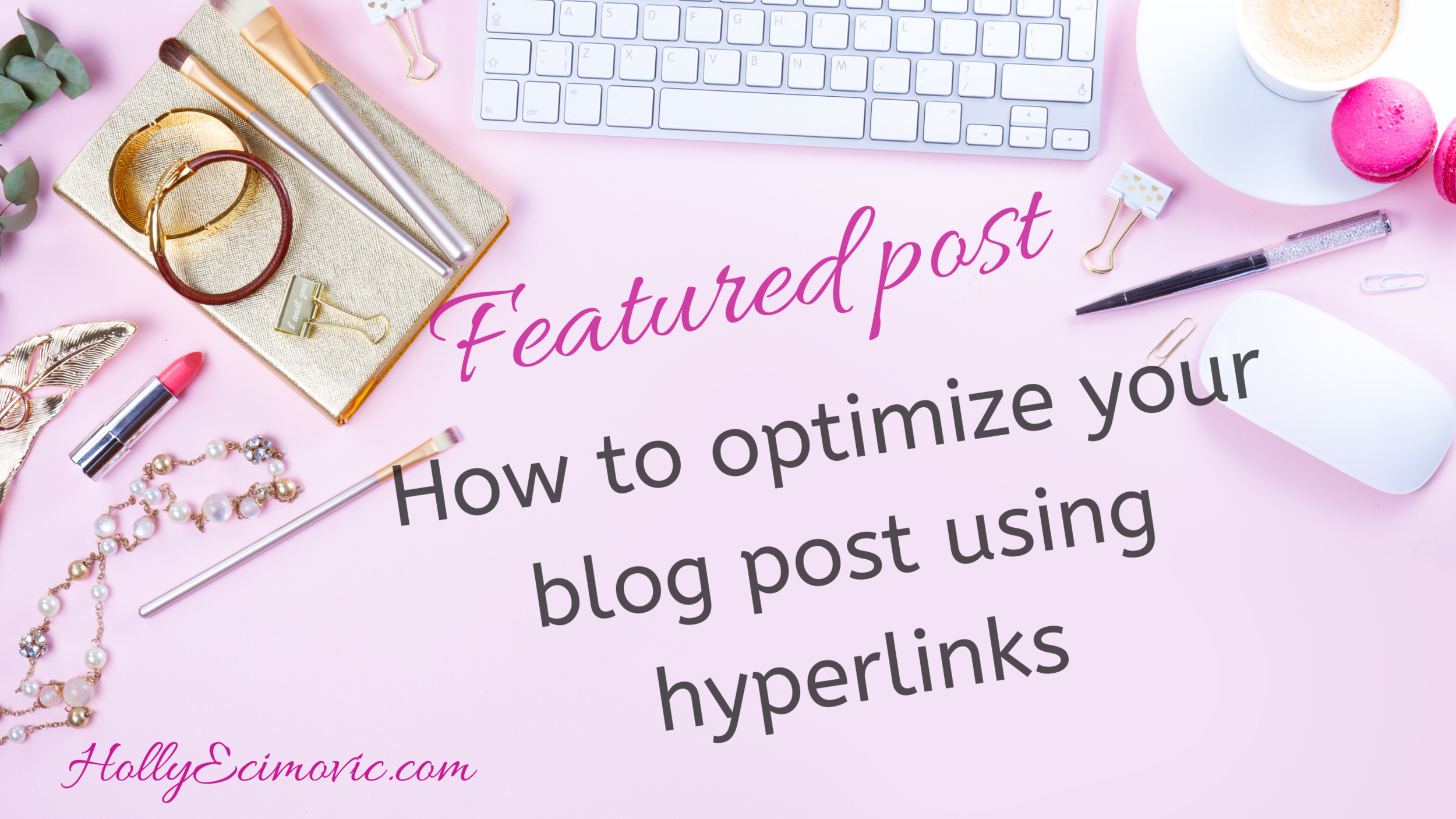3 ways to optimize your blog post using hyperlinks
This post may contain affiliate links, which means I’ll receive a commission if you purchase through my links, at no extra cost to you. Please read full disclosure for more information.
Today we’re going to look at three ways you can optimize a blog post using hyperlinks to generate more traffic to your website, increase viewer and reader interaction, as well as how to make the post more interesting and valuable, leading to more people sharing your work. Sounds like a win!
First, let’s talk about what ‘optimizing’ a blog post means.
Optimization means that you are making changes to your website that will enable your page to show up more prominently and frequently in search engines, such as Google or Pinterest.
This means you are making changes that will cause the search engines to pay attention to your content, which will prompt them to want to show it to more viewers on the platform who are searching for a particular item.
This means more blog traffic to your website.
There are many different ways to optimize your blog post, however, today we will only be focusing on three key ways you can do it with hyperlinks.
INCLUDE HYPERLINKS TO RELATED CONTENT WITHIN YOUR BLOG POST
A hyperlink is when you highlight a word or a sentence within your blog post, and when the user slides their mouse over it on the page, they can click on it and it directs them either to another website, to another page on your website, or to an image.
Click here for an example - this hyperlink leads you back to my homepage!
This can be very useful for a blogger because you can provide the user with more information by giving them ways to seek that new information — by clicking that link.
This strategy can be used to direct the user to related content within your website.
For example, if they are reading a post about how to make banana pudding, you can embed a link within that post that says something like, “CLICK HERE for a recipe on how to make chocolate pudding.” The possibilities are endless, and you can direct them to as many places you would like, and they will be given opportunities to visit other parts of your website they may not have seen before.
INCLUDE HYPERLINKS TO DIRECT USERS TO OPT INTO YOUR NEWSLETTER
Another great way to use hyperlinks is you can direct them to opt into your weekly newsletter. You could say something like, “click here to subscribe to my weekly newsletter on blogging.” They can then fill out their information so they can receive your weekly content, in an instant.
RELATED: Are you blogging legally? Grab your legal blogging template today!
For those who have physical products to sell, you could easily direct them to your shopping link.
Say something like, “click here to shop my online boutique,” and they would be directed to your products, where they can order.
A great example of this would be to link them to your Shopify, although there are many others you could use.
Some bloggers might have affiliate links to share, where a reader can find a possible discount to a product mentioned, or they can just simply shop the products using the blogger’s link.
For example, “click here to check out a legal template you can implement on your own blog, using my link.” This gives the user a reason to check out a product they might not have seen before, and they might be interested in after reading the blog post about the benefits of the product or service.
INCLUDE HYPERLINKS IN THE FORM OF CLICKABLE PHOTOS
Our eyes are usually drawn to the graphics inside a post, so why not take advantage of this fact?
Next time you upload an image to your blog post, you should try connecting it to a hyperlink.
For example, you might create an image that says, “Check out the new spring eyeshadow palette.” The image might have a photo of a palette, with the text as well, that tells the user to click. When the user clicks the image, they are directed to the page that talks about the spring palette. In this way, the image acts kind of like a button — the user clicks the image like a button that takes them to their destination, which is learning more about what the image told them about.
You can easily make the image clickable usually by highlighting the image, then clicking the link icon in your web design platform, such as Wordpress or Squarespace, and then entering your desired URL that you want to connect the image to.
However, if you are using Squarespace, it’s a little different. You would insert a photo block, then go to “Design” and then you could edit and add your hyperlink there.
Click the photo below for an example! (And grab your FREE email marketing checklist!)
CONCLUSION
There are so many ways to optimize your blog post using hyperlinks, but today we just talked about three small action steps you can take today:
Using hyperlinks to direct users to related content on your blog;
using hyperlinks to direct them to opt into your newsletter or your shopping link;
or by making an image “clickable,” meaning when the user slides their mouse over the image, they can click on it and it takes them to another URL.
If you found this information useful, please share this post with your friends!
Thanks for reading!

